
© Erik Tomasson. (Click image for larger version)
San Francisco Ballet
Program 3 – Distinctly SF Ballet: On a Theme of Paganini, Ibsen’s House, Ghost in the Machine
★★★✰✰
San Francisco, War Memorial Opera House
15 February 2018
www.sfballet.org
Consider things that are distinctly San Francisco. I think of cable cars, gorgeous Bay views, an amazing culinary scene, and also the fog and high housing costs. For the third program of their 85th season, San Francisco Ballet (SFB) is taking things one step further, looking beyond what is distinctly San Francisco to that which is ‘Distinctly SF Ballet’. This mixed triple bill, which opened Thursday night, is made up of work created on the company by artists in the SFB family: On a Theme of Paganini by Artistic Director and Principal Choreographer Helgi Tomasson, Ibsen’s House by longtime company member and current Principal Character dancer Val Caniparoli and Ghost in the Machine by Myles Thatcher, part of the corps de ballet since 2010. None of the ballets are new to the War Memorial stage, though I had not seen Tomasson’s On a Theme of Paganini before.
Tomasson’s ballets are often slated first in SFB’s mixed repertory programs, and it makes perfect sense. Not because he is the company’s leader, but because the works provide a nice invitation into the artistic space – accessible choreography, inspiring music, subtle design and a good length, not too short or too long. They set the mood for an evening at the ballet. With simple costumes, a bare stage and a Rachmaninov score, 2008’s Paganini offered that welcome for program three.
Rachmaninov composed during a unique point in music history, when three genres were meeting: the romanticism of the late 1800s, the short impressionistic period at the turn of the century and then the onset of a new classicism in the early 1900s. Considering this rich intersection, it would have been interesting if Paganini had similarly spanned choreographic genres and styles. Instead, Tomasson opted to stick with a neo-classical frame.

© Erik Tomasson. (Click image for larger version)
One characteristic of neo-classical ballet is the connection between music and movement. Tomasson looked to this in Paganini’s opening choreography; unison phrases that rhythmically matched the first notes of the score. Unfortunately, the unison wasn’t there on Thursday evening. And this early challenge seemed to come up whenever unison was called for in the ballet. That is, until Paganini’s last moments, when the entire cast (twenty-three dancers) took the stage together. This final statement was quite good – turns, hand motions and a series of forward kicks totally in sync.
Expanded ballet vocabulary (another neo-classical tenet) was also explored throughout the work, especially pronounced in the dance’s middle sections. Sasha De Sola, Max Cauthorn and Wei Wang’s pas de trois had a lovely sense of forward motion with pinwheeled lifts and positions that slid across the floor (aptly echoing crescendos and decrescendos in the music). The foot dragged behind in spins, the hips pushed forward, back and side-to-side, and turns were both on pointe and on demi-pointe. Maria Kochetkova and Vitor Luiz’s pas de deux was deeply connected to the breath. And there was a fun moment where the studio and performance met. A jumping sequence for the men, one that might be encountered during class, made its way onto the stage, and transformed the surface into a buoyant trampoline.

© Erik Tomasson. (Click image for larger version)
Next up was Caniparoli’s Ibsen’s House (2008), an ode to the characters of playwright Henrik Ibsen. Five women from five of Ibsen’s plays take the stage together, each joined eventually by a male character from their respective story. I actually don’t know very much about Ibsen’s work, and I would bet that I wasn’t alone in my unfamiliarity. The genius of Ibsen’s House is that even with little to no context, you can get a sense of these characters and their journey. Between Caniparoli’s inspired choreography and the dancers’ outstanding dramatic performances, the themes in the ballet are incredibly clear.
The curtain rose to reveal a dark, empty ballroom, with draped black curtains and one large triangle of glass panes. Dores André, as Hedda Gabler, peered out the window. She turned, brought her palm to her mouth, neck and then traced it down her torso, suggesting the strength and fuel of her voice. Sofiane Sylve (Nora Helmer from A Doll’s House) smoothed her hair and her dress, in an attempt to make everything seem put together. Jennifer Stahl (Mrs. Alving from Ghosts) had her arm clasped behind her back. As she released it, the palm splayed to the heavens, then beat her chest in grief. Kimberly Marie Olivier, as Lady from the Sea’s Ellida Wangel, twisted her body in tumultuous circles, immediately conjuring images of a roaring, unforgiving ocean. And Ellen Rose Hummel (Rebecca West from Rosmersholm) communicated a frantic search – traveling forward on the diagonal, then backward, then shifting her facing once more – desperately trying to determine which path she should take.
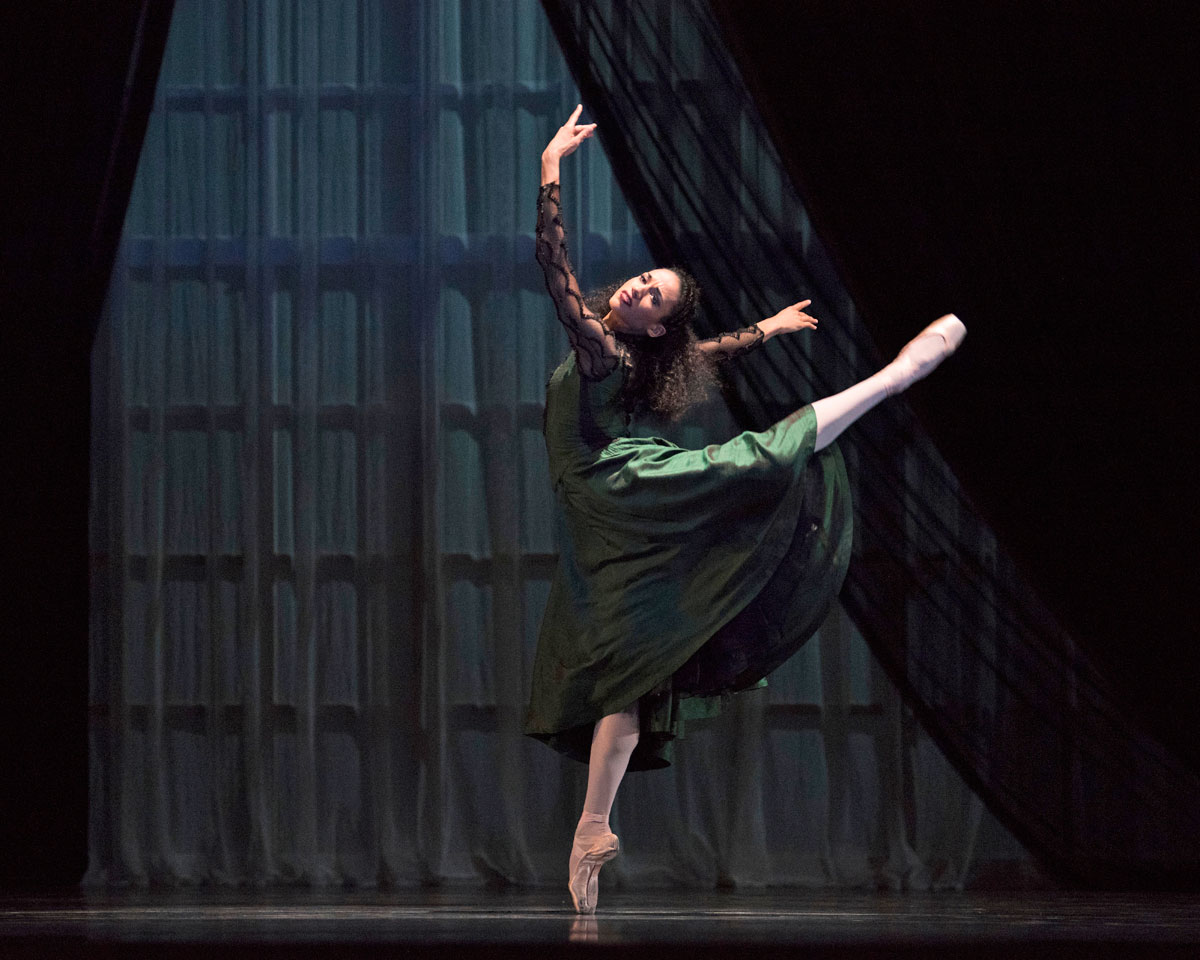
© Erik Tomasson. (Click image for larger version)
After these opening solos, the men joined the scene with equally emotive dancing. But Ibsen’s House is really a ballet about the female protagonists – their truth, their reality. And so, a late variation for the men, while the women traversed the stage holding parasols, feels like it could be edited out. Caniparoli layered the duets in the middle of the ballet, each one a noteworthy performance. My favorite amongst the group was Stahl and Thatcher. He appropriated her movements, and she, his. They took turns being supported in various balances, and as the pas de deux closed, their torsos heaved in concert, the pair overcome with shared emotion.
Thatcher had a busy night – he danced in the first two pieces and his own work, Ghost in the Machine, which took the final spot on program three. Premiering last year, Ghost is an impressive distillation of human dialogue. For an ensemble cast of ten (five women, five men), Thatcher built a series of constant conversations for the dancers, sometimes in small groups and sometimes, large. And the conversations have a varied tone – charged and antagonistic at the beginning giving way to care and understanding towards the end.
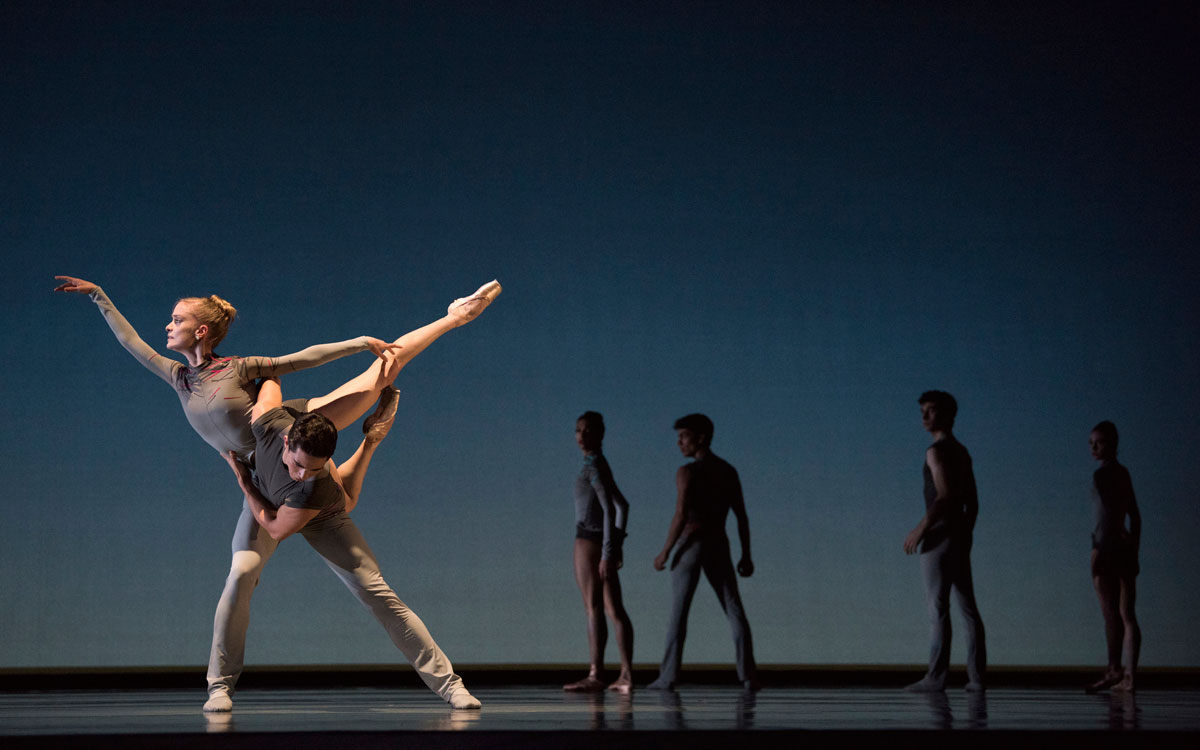
© Erik Tomasson. (Click image for larger version)
A large two-sided fiber sculpture (design by Alexander V. Nichols) set the mood immediately – its halves woven together in conversation above the stage. Frances Chung and Jaime Garcia Castilla opened the scene with a short, electric duet filled with pushing and pulling motions. As the rest of the cast joined, that contentiousness continued. Hands propelled torsos away; glances were steely and cold; shoulders were knocked back. And a recurring hand gesture looked the dancers were digging something up from the ground. Perhaps a metaphor for stirring arguments. As the backdrop changed and glowed blue, De Sola mined the space for answers – a leg extended in one direction, arms reached the opposite way. The cast crossed the stage in similar uncertainty, hands circling heads in disbelief.
And then an impactful transition – André and Di Lanno in Ghost’s main pas de deux. Swaying together, they took hands and walked downstage; they cradled each other and looked out on the horizon in hope. After a heady first half, here were moments of genuine kindness. Following André and Di Lanno’s duet, the energy picked up again, but the atmosphere had shifted permanently. The cast embraced, really holding onto each other with a desire to connect and comfort. While it was satisfying for the second half to venture into this optimistic and caring space, it maybe runs a little long. Overall, Ghost is not a lengthy ballet, but the final points in the work are communicated well before the final blackout.











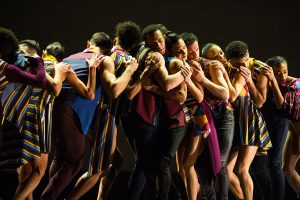
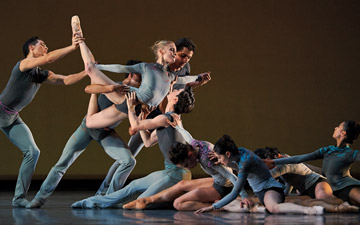
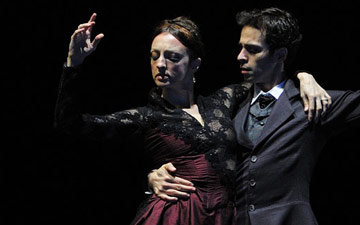


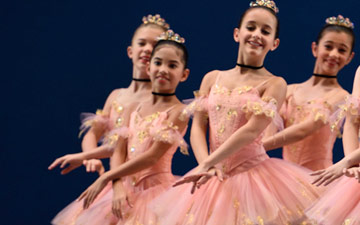
Heather has written an absolutely succinct review. I salute her accuity and
explanations. Dancetabs is lucky to have her.